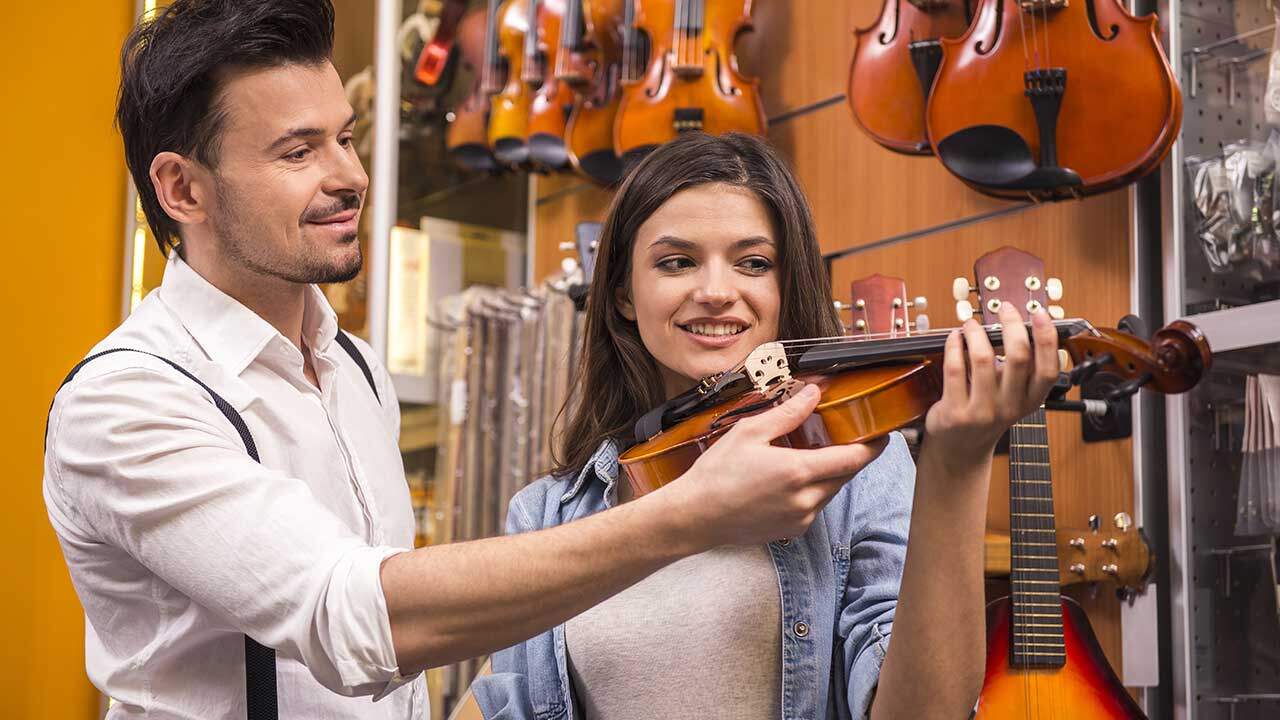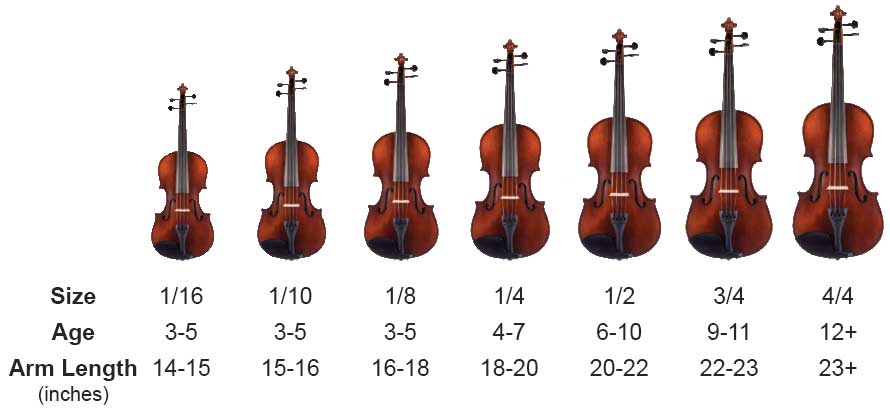Does your child want to learn the violin? If so, here’s a helpful guide full of useful tips to help you make an informed decision.

Helpful Tips for Buying a Violin
Does your child want to learn a musical instrument, and possibly considering the violin? If so, you may be wondering what to look for in a beginner violin.
And, you are probably also looking for something that is quite inexpensive, seeing as how you don’t know if your child is going to stick with it or end up wanting to try something else later on.
Today we are going to talk about how to buy a violin for a beginning student, looking at everything from what to look for to price range and more. Let’s get started.
We certainly hope you benefit from the information we provide in this article! Just so you know, we may receive compensation if you use the links on this page. If you do, thank you so much!
Buy or rent?
When someone is first starting to play the violin and you need one to practice, they have a few options.
If the beginner is a child and learning at school, there may be violins that they can borrow. Another option is to rent an instrument until you know for sure that the student isn’t going to lose interest after you go out and spend a lot of money. Or, you can purchase a student violin.
You don’t even have to spend hundreds of dollars, and there are some pretty good violins out there that cost less than a couple of months’ worth of rental fees.
There is no perfect option, as everyone has different needs. If you do opt to rent, ask if there are any deals where you can apply paid rental fees towards purchasing the instrument later.
What size do you need?
Whether you choose to rent or buy, there are certain things that you need to know about. For instance, the size of the violin is important.
![]()

![]()
A full-size instrument is referred to as a 4/4 violin, and then there are many smaller models. The size you should choose will be based on the arm length of whoever will be playing it.
They must be able to play comfortably, without having to stretch too far. Have the player extend their arm perpendicular from the body, palm up, and measure from the neck to the center of the wrist.
The following is a chart that shows the proper violins for various arm lengths.
Violin Size |
Arm Length in Inches |
| 4/4 | 23 |
| ¾ | 22 |
| ½ | 20 |
| ¼ | 18 |
| 1/8 | 16 |
| 1/10 | 15 |
| 1/16 | 14 |
Try it out first
If you have decided to purchase a violin, it is important that someone, whether it be the student or another violinist, try it out first. You can’t tell how an instrument is going to play just by looking at it.
Someone needs to play it so you know how good it sounds. Many people think that a low-quality violin is fine for the beginner, but this couldn’t be further from the truth. In the beginning, one is training their ear, and this is not an easy thing to do on a terrible sounding instrument.
It is also important for the student to try out different instruments in order to find one that feels just right in their hands. It has to be comfortable to play, which all goes back to making sure that you get a violin that is the right size.
![]()
![]()
Some music stores will let you borrow a violin for a week or two in order for you to know if it is going to be the right one for your child.
Go to many different shops, and bring home as many different instruments as you can, and have your child try all of them to see which one feels and sounds the best to them. Remember, there is no obligation to buy any of these instruments if they are not what the student is looking for.
How Do You Test A Violin?
Before you go out and start testing violins, you need to set a price range. You don’t want your child falling in love with an instrument that you can’t afford.
Bring along a good quality bow that has been rosined, preferably one that the student is used to using if they are already playing. More tips on how to test a violin before buying include:
- Play open strings to see what the resonance and volume is like
- Play scales across the instrument’s entire range
- Listen for noises that are not desirable, such as buzzing
- Compare the sound with other violins in the same price range
- Look at the strings. Low quality strings could affect the sound of an otherwise good violin
- Make sure the fingerboard is properly planed by playing in all neck positions
- Play the instrument in different rooms to get a feel for sound quality in a variety of settings
Check the construction

One final thing that you need to think about before purchasing a violin is its construction, as well as the structural integrity. There should be no creaky noises when pressing on any spot of the instrument.
When looking into the sound holes, you should see the sound post. If there is no sound post, move on to the next violin. This piece is critical for a good sound. Look for warping, and make sure that the neck is straight and even.
Don’t forget to ask what type of wood the body is made from. The best models are made from solid maple.
Check out online deals

![]()
Often, you can save a lot of money by purchasing a musical instrument online. You may be thinking that this is not a good thing, since you can’t try the instrument before making a purchase. The solution is to pick out a few that your child is interested in, and then try them out at music stores.
Once they find the one they like, go online and see if you can find it at a better price. Chances are that you are going to be able to save a lot of money.
![]()
![]()
Compare selected violin models:
Conclusion: Buying a Violin Made Easy
When shopping for the best violin for a beginner, not only do you need to bring the student with you, it is also a good idea to bring someone who already plays and can help your student choose the best model for them.
Stick within your price range, and no matter how low that is, you should have no problem finding the right instrument.

Leave a Reply